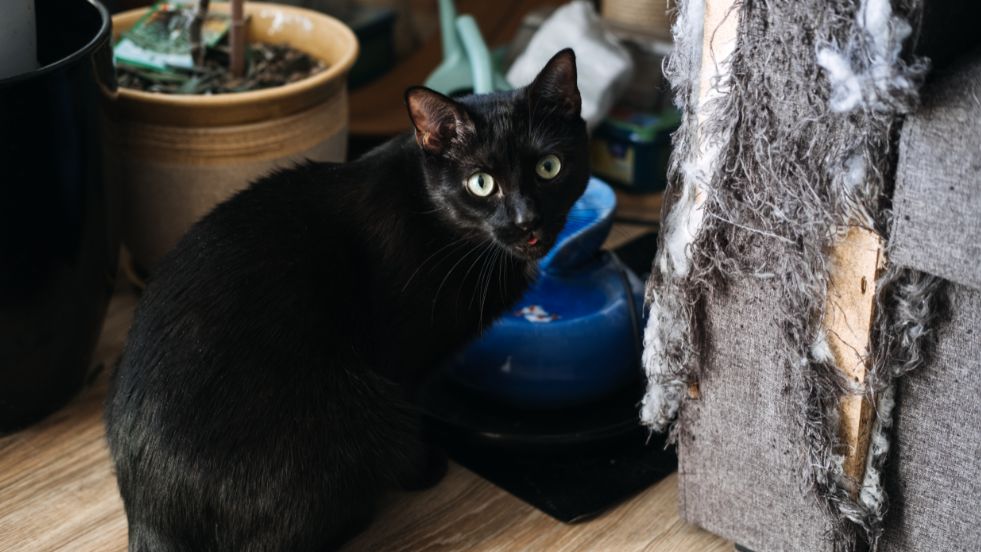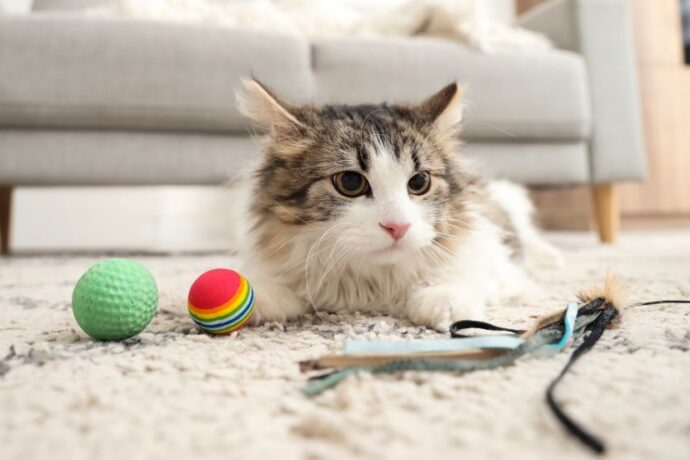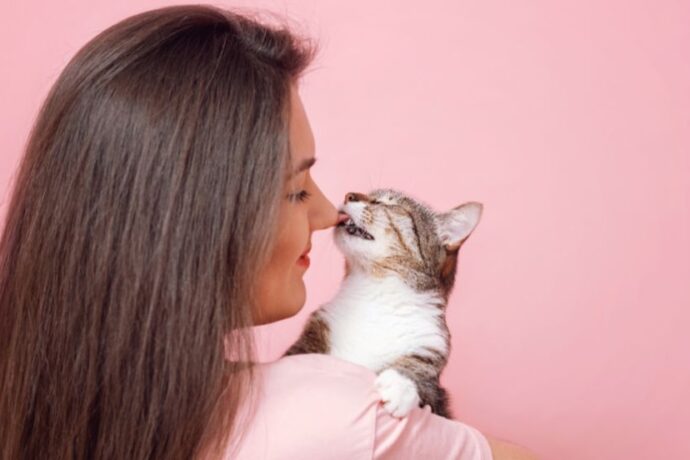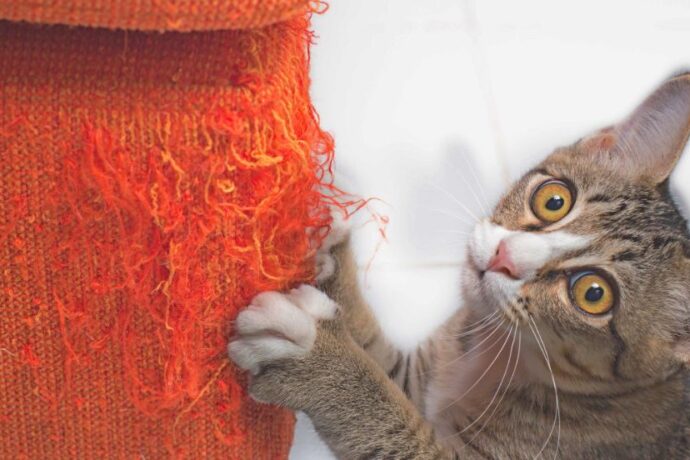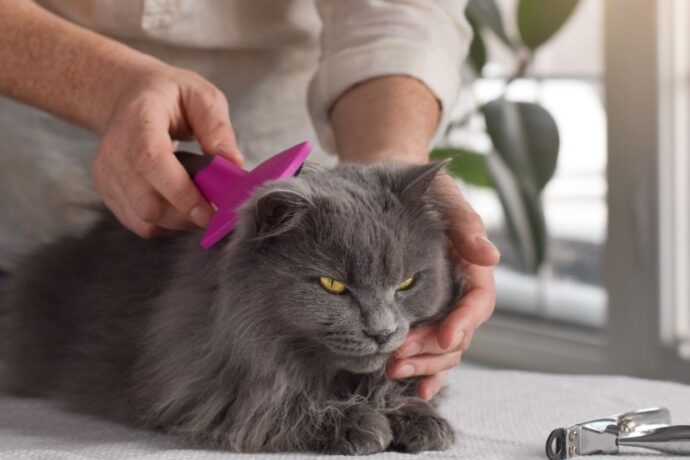If your cat has turned your couch into a scratching post, you’re definitely not alone. Scratched-up sofas, frayed carpets, and claw-marked furniture are common complaints among cat owners. But here’s the thing — scratching is not a bad habit; it’s natural feline behavior. Cats scratch to sharpen their claws, mark territory, stretch their muscles, and relieve stress.
The good news is, you don’t have to choose between your furniture and your cat. With the right techniques, tools, and a little patience, you can redirect your cat’s scratching instincts without punishment. In this guide, we’ll explore why cats scratch and give you proven strategies to keep your home — and your sanity — intact.
Why Do Cats Scratch Household Surfaces?
Cats aren’t scratching your furniture to annoy you — they’re fulfilling instincts. Here’s why they do it:
- Sharpening their Claws: Scratching removes dead outer claw sheaths, keeping them healthy.
- Marking their Territory: Cats have scent glands in their paws, and scratching leaves both visual and scent marks.
- Stretching and Exercise: Scratching helps stretch muscles and ligaments.
- Stress Relief: Scratching can release tension and act as a soothing behavior.
According to the Journal of Feline Medicine and Surgery, scratching is a biological necessity, not a behavioral problem. Instead of stopping scratching entirely, your goal is to redirect it to acceptable surfaces (1).
Reasons Cats Scratch Furniture, Carpets, and Floors
If your cat prefers the carpet to the couch, it’s often due to texture preference or territorial marking. Carpets feel similar to tree bark, making them appealing for claw maintenance.
Some cats scratch the flooring near doors or windows as a way of scent-marking entry points. Studies in feline behavior(2) indicate that cats are more likely to scratch areas where high-value scents exist, such as spots where humans or other animals frequently walk (3).
Solution? Provide alternative textured surfaces like horizontal scratching pads, sisal mats, or corrugated cardboard scratchers near their favorite scratching spots.
7 Effective Ways to Prevent Cats from Scratching Your Couch and Furniture
1. Provide Plenty of Scratching Alternatives
Offer multiple scratching posts and pads around your home. Cats love variety in texture, angle, and location.
- Use sisal-wrapped posts, cardboard scratchers, and carpeted towers.
- Place them near your cat’s favorite scratching spots to encourage use.
2. Use Catnip to Attract Them to Scratchers
Most cats are naturally drawn to catnip. Sprinkle or spray catnip on scratching posts to make them irresistible.
- If your cat isn’t a fan of catnip, try silvervine or valerian root as alternatives.
3. Make Furniture Less Appealing
Discourage scratching by making your furniture unattractive to claws:
- Cover target areas with double-sided tape — cats hate the sticky feel.
- Use furniture-protection films or vinyl guards.
- Spray cat-safe deterrents with citrus or herbal scents, as cats dislike these smells.
4. Trim Your Cat’s Claws Regularly
Shorter claws mean less damage when scratching does occur.
- Use a cat-specific nail clipper and trim just the sharp tips.
- If you’re unsure, ask your vet or groomer to demonstrate safe trimming techniques.
5. Try Soft Nail Caps
Soft vinyl nail caps, like Soft Paws, are an effective solution for persistent scratchers.
- They’re glued to your cat’s claws and last about 4–6 weeks.
- Safe and painless, they allow scratching motions without damaging furniture.
6. Use Positive Reinforcement
Reward your cat when they use their scratching posts instead of your furniture.
- Offer treats, praise, or playtime immediately after appropriate scratching.
- Never punish scratching behavior — it can increase anxiety and make the problem worse.
7. Redirect, Don’t Punish
If you catch your cat scratching where they shouldn’t:
- Gently redirect them to the scratching post instead of yelling or spraying water.
- Consistency is key — every successful redirection builds better habits.
How to Stop Cats from Damaging Carpets and Floors
If your cat is obsessed with scratching the carpet:
- Use horizontal scratch pads and place them directly on top of favorite scratching areas.
- Apply double-sided tape or plastic mats where scratching is most frequent.
- Offer variety: cats that scratch horizontally often prefer cardboard scratchers over vertical posts.
Mistakes to Avoid When Addressing Cat Scratching Behavior
While it’s tempting to use quick fixes, avoid these common mistakes:
- Don’t Declaw your Cat: It’s an invasive, painful procedure and is widely considered unethical.
- Don’t Yell or Spray Water: These methods create fear but don’t teach alternative behaviors.
- Don’t Eliminate Scratching Entirely: Cats need scratching for physical and emotional health — the goal is redirection, not suppression.
Scientific Insights: The Feline Psychology Behind Scratching
A study published in Applied Animal Behaviour Science found that cats provided with multiple scratching options near resting and play areas showed a significant decrease in furniture scratching within two weeks (4).
Additionally, research highlights that positive reinforcement combined with environmental enrichment is the most effective long-term strategy to reduce destructive scratching (3).
FAQs About Stopping Cats From Scratching Furniture
1. Should I declaw my cat to stop scratching?
A. Absolutely not. Declawing is painful, can cause long-term physical and behavioral issues, and is banned in many countries. There are humane alternatives like scratching posts and nail caps.
2. My cat ignores the scratching posts. What should I do?
A. Experiment with different textures, shapes, and locations. Sprinkle catnip on posts, or try placing them near your cat’s favorite scratching areas.
3. Are cat deterrent sprays safe?
A. Yes, as long as they’re labeled pet-safe. Choose natural options with scents cats dislike, such as citrus or lavender. Always test a small area of your furniture first.
Conclusion:
Scratching is an essential part of your cat’s life, but your furniture doesn’t have to suffer. By understanding why cats scratch, offering attractive alternatives, and using positive reinforcement, you can create a harmonious home where your cat is happy, healthy, and your furniture stays intact.
Patience and consistency are key. With the right strategies, you can redirect your cat’s instincts without punishment — keeping both you and your feline friend stress-free.
References:
1. Unwanted Scratching Behavior in Cats
2. Scratching behaviour and its features
3. Common feline problem behaviors
4. Unwanted Scratching Behavior in Cats

